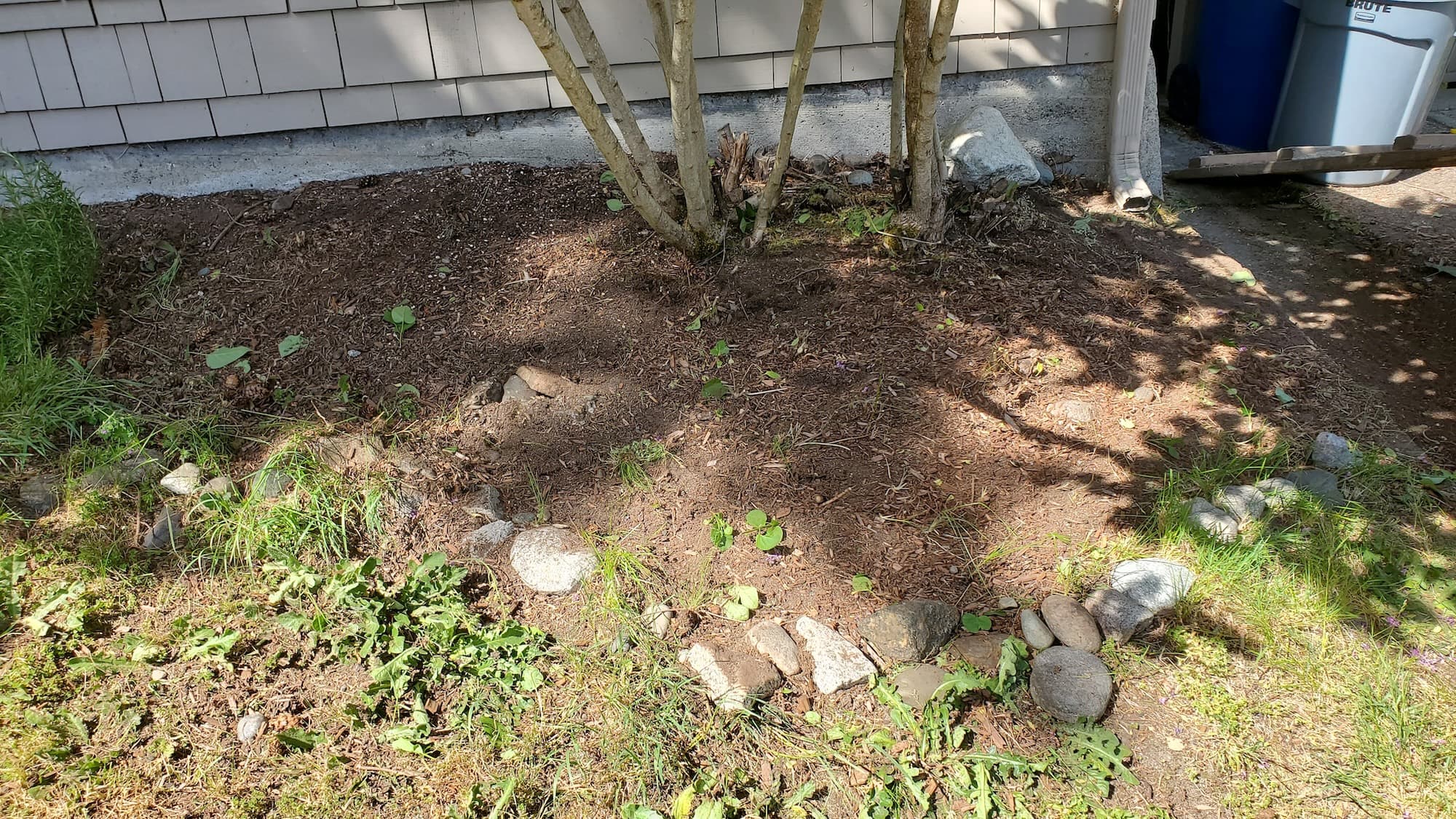West Seattle Storm-damaged brush clearing
Homeowner’s Issue
If a fall or winter storm left branches, toppled shrubs, or a tangle of salmonberry and ivy across your yard, you’re not alone. West Seattle yards take a beating from the Puget Sound microclimate — plenty of rain, a stiff marine wind at Alki, and shaded, moss-friendly slopes around Lincoln Park and High Point. Soils here are a mix of compacted urban fill and glacially derived loams; that means roots can lift patios, and wet winters turn brush piles into slippery hazards.
Common headaches: blocked access to slopes, downed limbs on fences or under power lines, and invasive vine regrowth after a storm. Sun exposure varies block-to-block — properties facing the sound get more wind and salt spray, while interior lots hold more shade and moss. HOAs in Admiral, Morgan Junction, and Fauntleroy expect tidy edges and safe sightlines, and neighbors notice quickly. Sustainable cleanup matters here: wet piles left too long invite slugs, blackberries resprout fast, and dumping green waste at the curb is governed by Seattle Public Utilities rules. We focus on practical fixes that fit the local rules and reduce repeat visits.
Our Quality Service
We clear storm damage with purpose — no fluff, no herbicides, just practical, sustainable methods. We assess hazards, hand-remove vines and low brush, prune broken limbs, and use chippers for larger material. For steep or tight lots we bring rope-enabled techniques and compact hauling kits to avoid heavy machinery where it would damage roots or soil.
Typical timeline: photo estimate within 24–48 hours, onsite visit same-week when possible. Small yards are often done in a half-day; larger or hillside jobs run 1–2 days. Seasonal note: we avoid heavy excavation during saturated months to prevent rutting and compaction. We follow Seattle green-waste rules — wood and brush go to chip/haul or the green bin depending on volume.
Benefits:
- Safer entryways, walkways, and sightlines for neighbors and traffic.
- Better curb appeal for Admiral, Alki, and Lincoln Park-adjacent homes.
- Lower maintenance: mulched beds, weed fabric options, and cut-and-chop biomass slows regrowth.
- Sustainable: no herbicides, emphasis on hand weeding, mulching, and native-friendly pruning.
What’s Included
- Full site assessment and hazard identification.
- Hand removal of vines, blackberry, salmonberry, and small brush.
- Pruning of storm-damaged branches to ISA-friendly cuts.
- Debris chipping on site (when space allows) or haul-away.
- Final rake, sweep, and tidy of beds and edges.
Options / Upgrades:
- Mulch + landscape fabric installation for beds.
- Organic soil amendments and topdressing.
- Native replanting suggestions (salal, sword fern, red-osier dogwood).
- Haul-away to green-waste facility vs. curbside green bin sorting.
- Large-stump or root collar grinding (quoted separately).
Before & After / Expectations
Be honest: brush clearing is noisy and messy for a day or two. Expect chainsaw noise, wood-chipper sound if used, and crews moving material to curb or chip areas. If access is tight, plan for staged removal and slightly longer timelines. We keep debris sorted: chip-sized pieces for mulch or green-waste hauling, larger logs stacked for pickup, and anything hazardous prioritized.
West Seattle care tips after service:
- Water new plants only in summer drought windows (early morning, twice weekly).
- Watch for blackberry and ivy re-sprouts in spring — hand-pull before they set seed.
- Moss thrives in shaded, compacted spots; aerate and topdress in spring to shift conditions.
- Reapply mulch in the first year to suppress weeds and retain moisture.
FAQs
Q: How quickly can you start after a storm?
A: We offer photo estimates within 24–48 hours and try to schedule work within the same week, weather and permit needs permitting.
Q: Do you use herbicides?
A: No. We rely on hand-pulling, mechanical removal, mulching, and organic controls only.
Q: Will you damage my lawn or garden?
A: We avoid heavy machinery on soft ground and use low-impact hauling on slopes. If excavation is needed we discuss options and timing to limit compaction.
Q: What about disposal?
A: Small volumes go in Seattle green bins or are chipped for mulch; large volumes are hauled to green-waste facilities. We’ll tell you which method makes sense during the estimate.
Call to Action
West Seattle homeowners: if storms left you with a yard that feels unsafe or just plain ugly, we’ll get it back to usable fast and clean. Free estimates, practical solutions, and sustainable methods that respect neighborhood rules around Alki, Lincoln Park, and Fauntleroy. Book a photo estimate or site visit today.
Email: neatandtidyseattle@gmail.com










